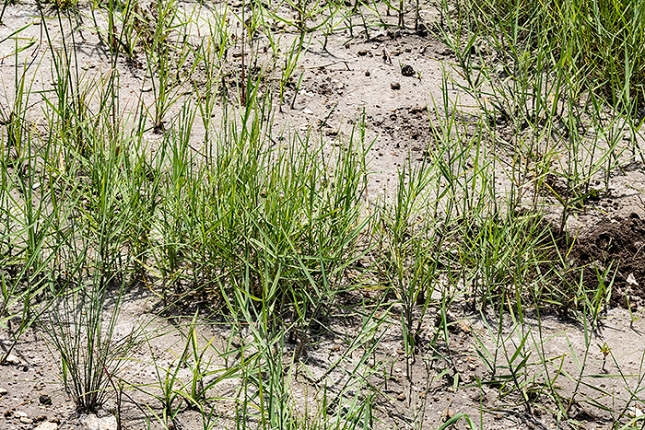Panicum repens
Poaceae, The Grass Family
The names:
Panicum refers to the panicle, a branched, flower cluster.
Repens means creeping.
Torpedo grass is the perfect name. Not only does the sunken rhizome look like a torpedo, it behaves like one too.
The essentially tropical species torpedo grass is of unknown origin, generally but not unanimously regarded as indigenous to the Old World, and invading the Americas at least as far back as the 19th Century. The grass once served as a forage grass, although it has some livestock toxicity. I wonder if it is experiencing a northward range extension via global warming. Nowadays torpedo grass is one of the premier weed pests in southern states, and around the tropical world.
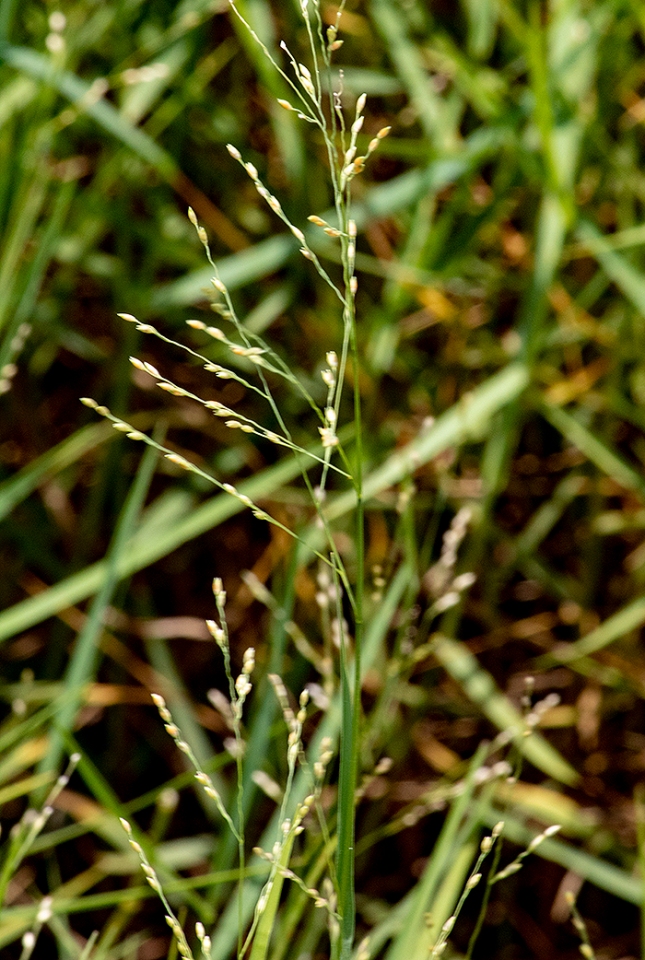
The grass is OUTRAGEOUS! Here are some TG OMGs:
Rhizome pieces can grow to the surface after burial of over 12 inches.
They survive at least 60 days buried.
Living rhizomes have reportedly turned up under soil about 20 feet deep (huh!?) and under 5 feet of water.
Rhizome segments remain viable after at least 10 weeks of floating.
They can dry out and then later sprout.
The torpedo can penetrate wood and asphalt.
Growth can exceed half an inch per day.
A single rhizome node can make 20,000 buds in a year.
Torpedo Grass covers over 16,000 acres around Lake Okeechobee.
Usually associated with wet habitats, the grass can occupy dry sites, even in scrub.
Salty habitats are just fine.
The species is allelopathic, that is, it poisons competitors.
What a grass!, despite herbicide, fire, and plowing attacks, it blankets countless acres. In some places, especially those under shallow water, much of the year, TG can form acres of “lawn,” yet I can’t maintain a healthy St. Augustine front yard to keep the HOA golf cart spies content. Proud homeowners keep their lawns lush with fertilizer. So how can today’s species make a big happy carpet without added fertilizer? Well, maybe it has some, not counting whatever nutritional pollutants are in its wet habitat. Let’s look into TG and nitrogen:
Over the last few days I’ve botanized a multiacre torpedo grass invasion on a severely disturbed wet meadow. The surface is essentially bare wet sand. How sand can “fertilize” tons of torpedo grass might seem a mystery, but here’s the thing: Mixed grass-legume pastures feed livestock sustainably because the legumes “fix” nitrogen by transforming atmospheric nitrogen gas to ammonium, which plants can use directly. Fixed nitrogen is the fertilizer nutrient needed in by far the highest volumes. A legume-heavy field is largely self-fertilizing. The field west of Jupiter is not a monoculture of torpedo grass, but instead is a mix of the grass and a substantial component of legumes: Indian shyleaf by the ton, thousands of wild bushbeans, and additional legumes scattered in small quantities, such as sensitive-pea, alyce-clover, cowpea, and danglepod. Grass plus legumes, almost nothing else.
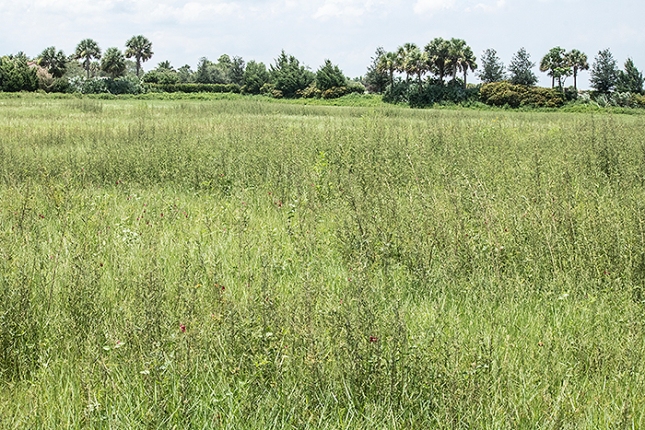
Torpedo grass stretchin’ out so far and wide. But wait a moment—all those taller plants are Indian Shyleaf, a nitrogen-fixing legume
That t-grass responds to added nitrogen is demonstrated in published experiments. You can deduce the same from one clump in my study area…taller than the rest of the torpedo grass, and darker green. Why? The happy grass sits atop a big scary ant nest, and no doubt the anty debris and waste is a nitrogen boost.

Clump of torpedo grass taller and greener than its neighbors. Go look…well, it is on an ant mound. The non-grass plants visible are legumes bushbean and shyleaf.
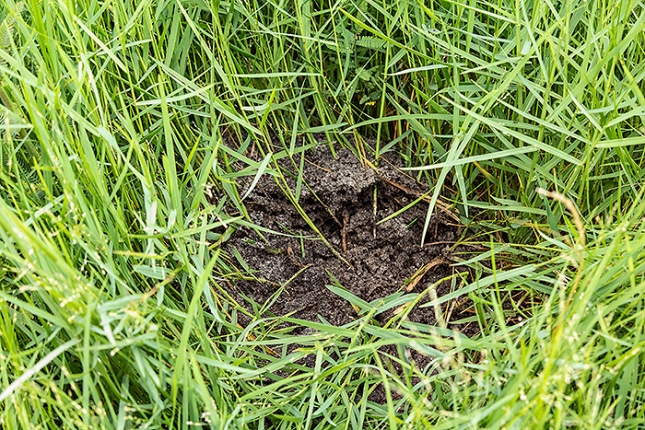
If you don’t believe me about the ants, stick your hand in there for ten seconds.
It isn’t all about legumes and ants. The ability of grasses to thrive in vast quantities without human-added fertilizer is becoming increasingly attributable to symbiotic nitrogen-fixing bacteria, not in nodules, as in legumes. Instead, nitrogen-fixing bacteria live in the grass’s root zone, or sometimes housed within leaf bases around rhizomes, or even within the grass tissues. This area needs a lot of study. Nitrogen-fixing bacteria have been reported a couple times associated with torpedo grass.
More astounding are additional bacteria associated with the grass and able to neutralize nasty acid soils, extending the already super powers of the torpedo grass into acid environments.
Weirdly, TG seems to be taking over the world despite poor seed production, at least in places. The species is reportedly unable to make viable seed in large parts of is range, including much of Florida. A study at Lake Okeechobee where the grass is out of control failed to find viable seeds in the soil seedbank. Thus most of the Florida reproduction is clonal, such as by floating rhizome fragments, also by axillary buds produced along the rhizomes. Just think, in a genetic sense a clone is one individual. That would mean South Florida is being devoured by an immense immortal botanical amoeba. Talk about going green!
The rhizome-buds are generally immune to herbicide applications, making torpedo grass hard to control chemically. Tilling encourages it. Fire can’t touch it. Weed-killing fungi have been tried but can’t do the job. We may be SOL.
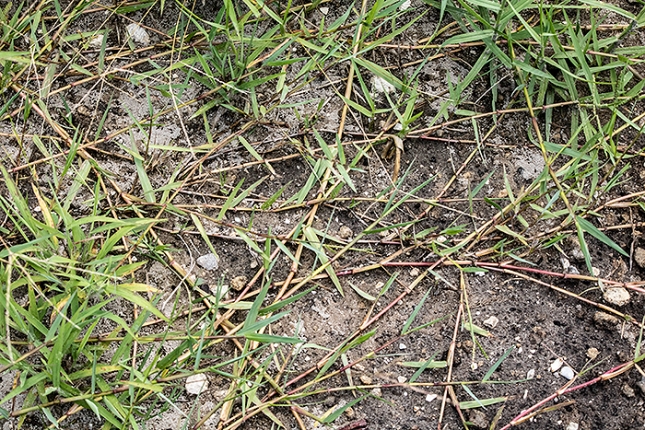
Long thin rhizomes running hither and thither.

They are hollow gas pipes.
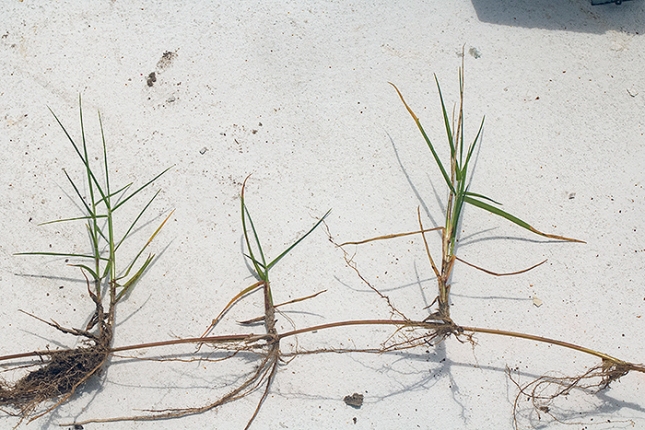
To add to the immorality, the rhizomes come in two different forms, sometimes totaling to over 85% of the plant’s biomass. One form is long, narrow, and able to penetrate the earth submerged, or to run across the surface of the ground. The long narrow rhizomes have a hollow center, clearly allowing gas exchange deep in the ground or submerged in water. These rhizomes put the torpedo in torpedo grass, helping it spread and invade like wildfire. The thin rhizomes can be so abundant to form mats 6 inches thick.
The second rhizome type is thick and gnarly, looking like a ginger “root.” Those who study the species actually call them “ginger root” rhizomes. These seem to let the species hunker down, store starch, and maybe sit tight until conditions become right for sending out a new infestation of the long thin rhizomes. Torpedo grass has been documented to “go dormant” under seasonal floodwaters, then resume spreading as water recede. Alternatively, the rhizomes can make a floating mat.
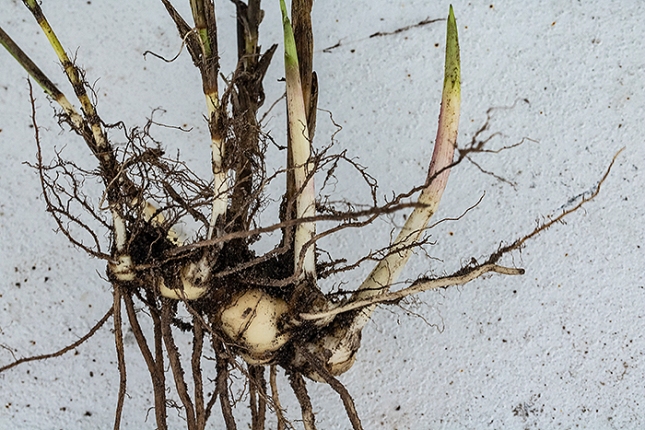
Ginger root style rhizome on torpedo grass
To sum it all up, torpedo grass is a species you can’t kill, eager to colonize wet places, standing water, scrub, acid soils, and probably the surface of Mars. It is armed and dangerous with aggressive imperial rhizomes and with resting food-storing rhizomes. You can curse it, and sometimes all we’ve got is resignation. But then again, a super-weed with crazy growpower ought to be good for something. Does all’s green make a little contribution to carbon dioxide reduction? Isn’t it good for some biomass purpose? Maybe as a bioweapon…dice the rhizomes and spew the pieces on the enemy?
